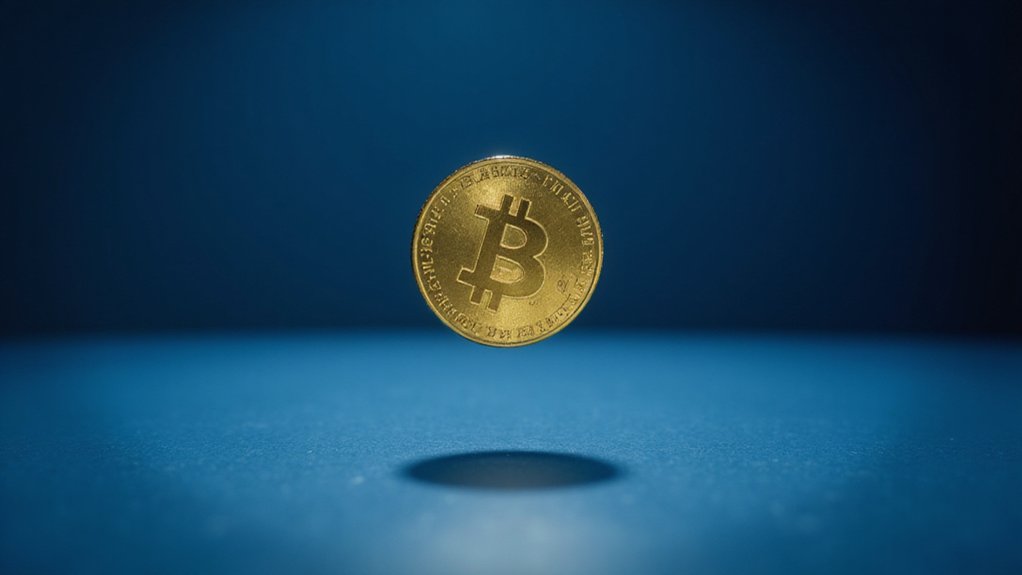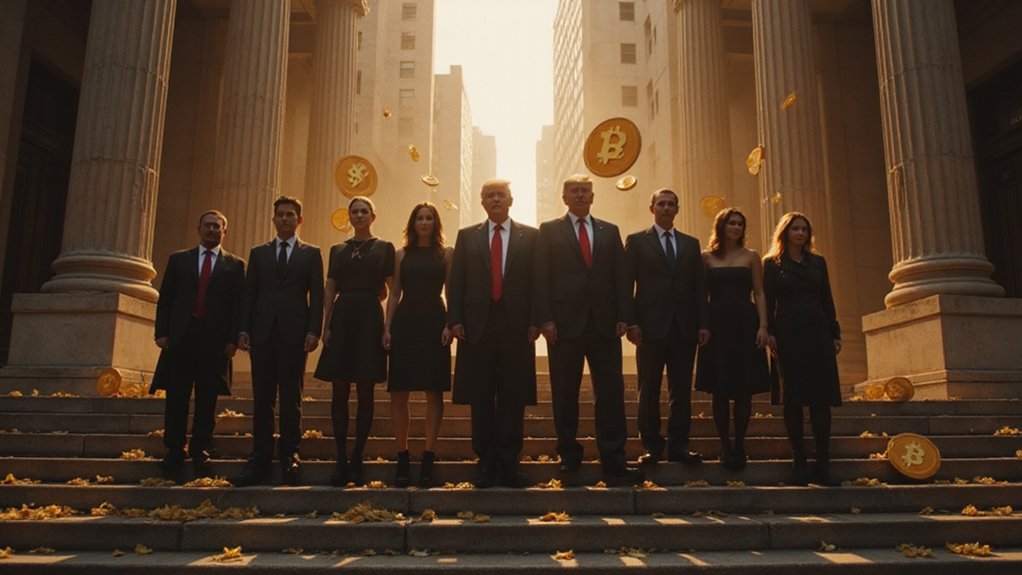While traditional banking executives once dismissed cryptocurrencies as speculative playthings for tech enthusiasts and libertarian dreamers, the explosive growth of stablecoins—from a modest $20 billion market in 2020 to $246 billion by 2025—has prompted a remarkable about-face among America’s financial titans.
From dismissive skepticism to strategic embrace—traditional banking’s $246 billion stablecoin awakening proves market forces trump ideological resistance.
The quartet of J.P. Morgan Chase, Bank of America, Citigroup, and Wells Fargo now finds itself exploring a consortium-backed stablecoin venture, presumably recognizing that ignoring a quarter-trillion-dollar market might constitute poor fiduciary stewardship. Their motivation extends beyond mere FOMO: these institutions seek to reclaim territory increasingly dominated by crypto-native players like Tether, whose $150 billion market capitalization dwarfs many traditional financial products.
The banking consortium’s strategy involves integrating existing payment rails—including peer-to-peer systems like Zelle—with stablecoin technology to enhance real-time payment capabilities. This approach represents both defensive maneuvering against fintech disruption and offensive positioning within the evolving digital payments landscape.
The irony, of course, is that institutions once skeptical of decentralized finance now scramble to leverage its innovations while maintaining regulatory compliance.
Regulatory frameworks are crystallizing around this evolution. Congress approaches passage of the Genius Act, targeting stablecoins exceeding $10 billion in market capitalization with federal oversight standards. This legislation reflects lawmakers’ recognition that stablecoins have transcended experimental status to become systemically significant financial instruments requiring thorough supervision. Currently, stablecoin regulation operates under varying state money transmitter laws without uniform federal framework.
However, the Federal Reserve maintains legitimate concerns about stablecoins’ potential for triggering run-like behaviors during market stress. Research indicates that investor “flightiness” within stablecoin pools could amplify financial instability, particularly given these instruments’ bridging function between traditional finance and crypto markets. The nonbank financial sector, which now comprises over 50% of the financial system, may further complicate regulatory oversight as stablecoins shift activities away from traditional banking institutions.
The challenge lies in balancing innovation with systemic risk mitigation.
Stablecoins offer compelling advantages: 24/7 availability, programmable payment capabilities, reduced cross-border transaction costs, and enhanced settlement efficiency. These features could revolutionize asset liquidity and trading mechanisms while challenging central banks’ monetary policy control. Major cryptocurrency exchanges like OKX are already leveraging these advantages to maintain daily trading volumes exceeding $1.44 billion, demonstrating the practical utility of stablecoin integration in digital asset markets.
Yet their rapid adoption necessitates careful oversight to prevent the very disruptions they aim to solve.
The question remains whether Main Street banks can successfully navigate this evolution—embracing stablecoin technology while preserving the stability that defines their institutional identity. The answer will likely determine whether stablecoins represent revolution or merely expensive risk management.









